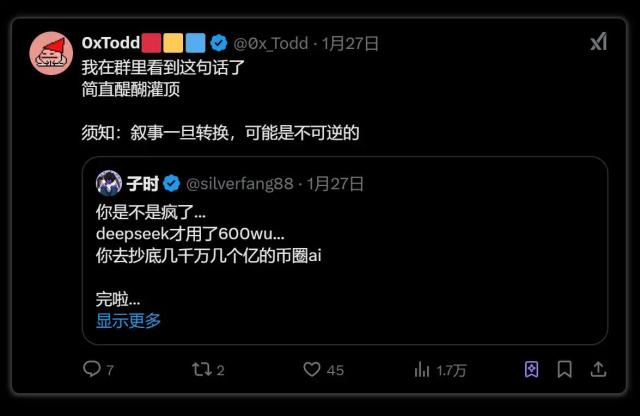Author: The DeFi Investor
Compiled by: TechFlow
ETH has performed quite poorly in this market cycle.
Going back to 2022, when BTC was at its bear market low, many predicted that ETH would easily break $10,000 this cycle.
However, many are now starting to doubt whether ETH can set a new all-time high this year.
Given the current depressed market sentiment, this doubt is understandable, as even ETC has outperformed ETH.
Of course, I remain a staunch supporter of the Ethereum ecosystem, but in my view, ETH's poor performance reflects the need for some profound changes in the Ethereum ecosystem.
Next, I will try to answer a key question:
Why has ETH underperformed in this cycle?
While the reasons are not entirely clear, I believe the following are the main factors.
Excessive ETH Beta Tokens
Almost all Ethereum L2 projects have issued their own tokens, causing many Ethereum supporters to allocate funds to these L2 tokens rather than ETH itself.
This has significantly reduced the capital inflow into ETH.
For example, if you are bullish on Solana (which has no L2 projects), you only need to buy SOL; but if you are bullish on ETH, you may face dozens of Ethereum-related token choices, such as tokens of L2 projects.
Fragmented Liquidity
The Ethereum ecosystem currently has over 100 L2 projects.
For skilled DeFi users, it is not difficult to cross-chain from one L2 to another, but for ordinary investors, this process may be very complex and headache-inducing.
While Ethereum L2s offer fast transaction speeds and low costs, if the cross-L2 user experience cannot be improved, this scalability will be difficult to drive mass adoption of Ethereum.
Technical Catch-up of Other L1s
In the previous market cycle, Ethereum was undoubtedly the leading L1 blockchain across various metrics.
Although Ethereum still has the strongest DeFi ecosystem, other L1s (such as Solana) have surpassed Ethereum multiple times in metrics like revenue and decentralized exchange (DEX) trading volume.
This is partly due to their technological advancements. While Ethereum has made some important progress in recent years, the technological development of some L1 competitors has been faster, and they are now able to provide a better user experience (UX).
How to Bring ETH Back to the Top?
Here are some directions worth trying:
Encourage Ethereum's L2 projects to incorporate ETH into their ecosystems, through a mechanism that burns a portion of transaction fees, reducing token supply and enhancing the scarcity and value of ETH.
Strengthen ETH's core position in the Ethereum economy (Vitalik has suggested that more support should be given to decentralized applications (dApps) that use ETH as their primary collateral asset).
Allocate more resources to solve the L2 fragmentation problem, unifying liquidity, should be a top priority for Ethereum's development.
Accelerate Ethereum's technological upgrades (Although Ethereum has burned over $100 million worth of tokens per year through its burning mechanism, its pace of technological upgrades has clearly lagged behind other L1 blockchains.)
Establish a sustainable revenue model for the Ethereum Foundation. By obtaining stable income from transaction fees or staking rewards, the Ethereum Foundation can reduce its dependence on selling ETH, thereby avoiding negative impacts on the market price.
Promote the scaling of Ethereum L1. While Ethereum's long-term goal is to achieve scaling through L2, there is still great potential to optimize L1's scaling capabilities. By enhancing L1's scalability, the overall user experience and competitiveness of Ethereum can be further improved.
These measures may be an important step in pushing Ethereum to new heights.
However, in recent years, the Ethereum Foundation and its community seem to have fallen into a certain degree of complacency, and this attitude may weaken the project's competitiveness in the long run.
Ethereum is still the leading L1 blockchain, but if it does not adopt a more proactive strategy, other L1 projects with passionate and innovative teams may gain the upper hand in this competition.
Now is the time for the Ethereum community to rekindle the "winner's mentality" and ensure its leadership in the blockchain space.
The good news is that we can already see some positive changes, especially from the efforts of Ethereum ecosystem projects that are trying to improve market confidence in ETH:
MegaETH: Developing a high-performance Ethereum L2 with a target of supporting over 100,000 transactions per second (TPS), to compete with highly scalable L1 blockchains.
Eclipse: Committed to building the first Ethereum L2 supported by the Solana Virtual Machine, aiming to combine Solana's high-speed performance with Ethereum's high security.
Pectra Upgrade: Ethereum's upcoming major upgrade Pectra, which will significantly improve the user experience (UX) by introducing native Account Abstraction functionality, making blockchain interactions more streamlined and efficient.
Eric Trump's Promotion: Eric Trump's recent public endorsement of ETH has led to speculation that the US may potentially establish a national-level Ethereum reserve.
The above three technological advancements will undoubtedly drive further adoption of Ethereum L2. But the more important question is:
Can these advancements truly drive an increase in the price of ETH? This remains to be seen.
In my view, the two key factors for driving ETH's price higher again are:
Solving the liquidity fragmentation problem (optimizing the cross-L2 user experience).
Improving ETH's token economics (Vitalik recently proposed in a blog post that by encouraging L2 projects to burn a portion of transaction fees, the supply of ETH can be reduced, thereby enhancing its value).
Personally, I do not currently hold a large amount of ETH, as I tend to invest more in rapidly growing DeFi project tokens.
However, an increase in the price of ETH is good news for all altcoin holders.
Historically, ETH's rallies have often been an important trigger for altseason.
The future development of the ETH ecosystem will not only impact Ethereum itself, but will also have far-reaching implications for the entire crypto market.







